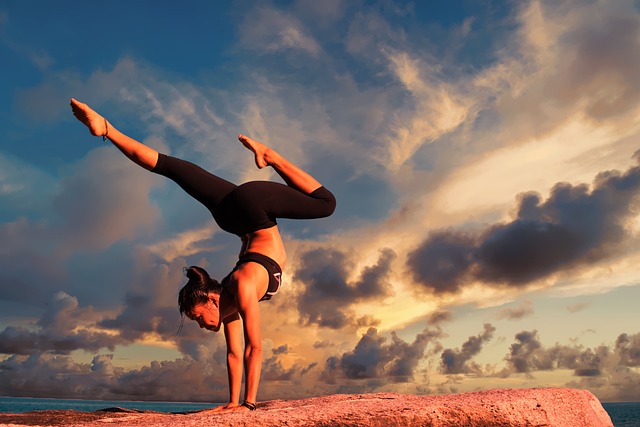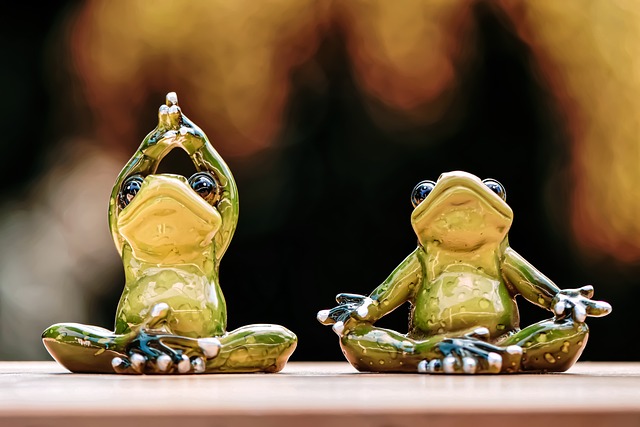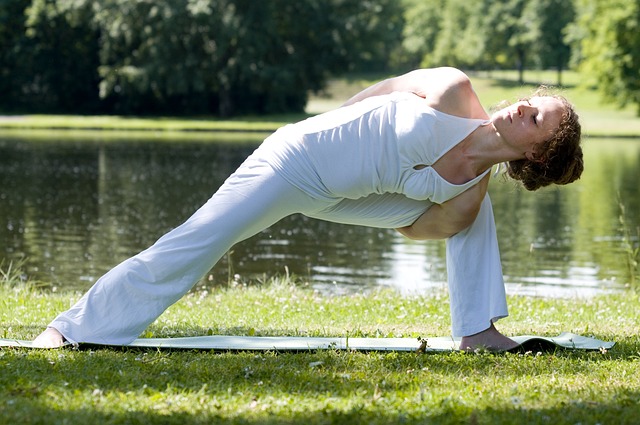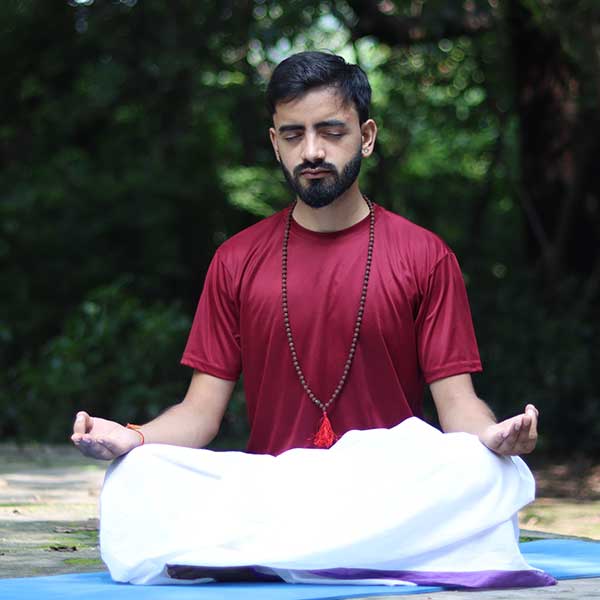
Vinyasa: Embracing the Flow of Yoga
Introduction
Human beings are frequently drawn to the world of yoga while beginning their adventure of self-discovery and well-being. Within this awesome realm, one precise fashion stands out with its fluidity and dynamic nature—Vinyasa. In this blog, we will delve into the essence of Vinyasa yoga, exploring its origins, blessings, and sensible factors. Let's find the secrets and techniques for harmonizing breath and motion in a transformative workout.
Understanding Vinyasa
Vinyasa, derived from the Sanskrit phrases "nyasa," which means "to vicinity," and "vi," which means "in a unique way," represents a flowing collection of yoga postures. This fashion is characterized by using an unbroken transition between poses, guided with the aid of conscious breath attention. Unlike static yoga practices, Vinyasa encourages a non-stop go with the flow, growing a dance-like rhythm on the mat.
The Roots of Vinyasa Yoga
Vinyasa yoga reveals its roots in ancient yogic traditions, mainly inside the dynamic Ashtanga Vinyasa machine. Developed via Pattabhi Jois, Ashtanga Vinyasa laid the foundation for the free-flowing sequences we now associate with contemporary Vinyasa exercise. Over time, this dynamic form of yoga has advanced, incorporating numerous elements from one-of-a-kind traditions.
Benefits of Vinyasa Practice
Physical Benefits
Vinyasa yoga offers a myriad of bodily blessings. The continuous motion promotes flexibility, energy, and cardiovascular fitness. Each pose seamlessly transitions into the following attractive, distinctive muscle groups, enhancing normal frame recognition.
Mental and Emotional Well-being
Beyond the physical, Vinyasa has a significant impact on mental and emotional well-being. The coordination of breath and movement enhances mindfulness while reducing strain and tension. The rhythmic drift encourages a contemplative state, allowing practitioners to connect with their inner selves.
Getting Started with Vinyasa
Breath Awareness
Central to Vinyasa is the emphasis on breath consciousness. The ujjayi breath, a gentle hissing sound created by means of slightly constricting the throat, serves as a manual for motion. Conscious respiration now not only complements the float but additionally creates a transferring meditation, grounding practitioners in the present moment.
Sun Salutations
Sun salutations, or Surya Namaskars, shape the cornerstone of Vinyasa sequences. These dynamic sequences heat up the body, linking breath with motion. Consisting of a series of poses, Sun Salutations prepare the practitioner for the extra complex postures to follow.
Common Vinyasa Poses
Vinyasa encompasses a large selection of yoga poses, from basic to advanced. Common poses include Downward-Facing Dog, warrior sequences, and plank versions. The range allows practitioners to tailor their exercise to their skill level and desires.
Customizing Your Vinyasa Practice
Adapting for Beginners
For beginners, beginning with a slower-paced Vinyasa elegance presents an opportunity to understand the fundamentals. Focusing on foundational poses and breath awareness lays the groundwork for a more dynamic practice in the future.
Intensifying the Practice
On the opposite end of the spectrum, seasoned practitioners can intensify their Vinyasa practice. Incorporating difficult poses, exploring inversions, and deepening breath manipulation increase bodily and mental needs, providing a non-stop road for growth.
Overcoming Challenges in Vinyasa
Breath Synchronization
One common undertaking in Vinyasa is preserving breath synchronization at some point in the exercise. Practitioners may also find it challenging to shape each movement with a corresponding inhale or exhale. Consistent practice and awareness of respiratory techniques can triumph over this hurdle.
Building Endurance
The dynamic nature of Vinyasa requires patience. To build stamina, incorporating cardiovascular sports outdoors in the yoga studio can supplement the exercise. Additionally, gradually increasing the duration of Vinyasa sessions allows the body to adapt.
Staying Present inside the Flow
The rapid-paced nature of Vinyasa might tempt practitioners to lose attention. Staying within the drift includes cultivating mindfulness. Bringing interest lower back to the breath and embracing the adventure as opposed to focusing completely on the vacation spot is key.
Vinyasa for Everyone
Modifications for Different Abilities
Vinyasa is inclusive and adaptable. Modifications exist for each pose, making the practice handy for people with various abilities or physical boundaries. Yoga props, modifications, and alternative poses permit practitioners to tailor Vinyasa to their particular wishes.
Vinyasa During Pregnancy
Pregnant women can correctly exercise Vinyasa with adjustments. Avoiding certain poses and incorporating prenatal yoga versions ensures a mild and beneficial exercise. Consulting with a healthcare expert is vital for a secure and fun experience.
Exploring Vinyasa Variations
Ashtanga Vinyasa
The traditional Ashtanga Vinyasa, with its set sequences and emphasis on area, offers a structured method. Practitioners develop through series, mastering each before moving on. This methodical approach cultivates subjectivity and perseverance.
Power Vinyasa
Power Vinyasa infuses the exercise with depth and electricity. Faster-paced and harder, this change elevates the coronary heart rate and builds muscle. It caters to those seeking lively exercise while nevertheless embracing the glide.
Harmonizing Mind and Body
The beauty of Vinyasa lies in its ability to harmonize thoughts and frames. The continuous motion, coupled with aware respiration, creates a transferring meditation. This union fosters a sense of stability, grounding practitioners in the present.
Incorporating Mindfulness in Vinyasa
Beyond the physical postures, Vinyasa encourages mindfulness. Paying attention to the breath, sensations within the body, and the surrounding surroundings elevates the practice. This mindfulness extends beyond the mat, fostering an experience of consciousness in everyday life.
Common Misconceptions about Vinyasa
It's Too Fast-Paced
While Vinyasa can be rapid-paced, it's essential to discover a rhythm that fits man or woman's choices. Slower-paced lessons or non-public changes can make the practice available to anybody, regardless of velocity.
Only for Advanced Yogis
Vinyasa is adaptable to all degrees. Beginners can start with foundational poses, steadily progressing. With regular exercise, even the most superior poses emerge as doable, showcasing the inclusivity of this dynamic yoga style.
Not Relaxing Enough
Contrary to the false impression that Vinyasa is purely severe, it could be a deeply enjoyable exercise. The continuous float, while approached with a mindful and meditative mindset, fosters rest and stress comfort.
Stories of Transformation through Vinyasa
Real-existence stories abound of individuals experiencing transformative journeys via Vinyasa. From overcoming physical challenges to finding inner peace, those narratives highlight the profound effect of a consistent Vinyasa exercise.
Vinyasa Beyond the Mat
Daily Life Integration
The concepts learned at the yoga mat extend into our daily lifestyles. Mindful respiration, conscious movement, and the capacity to navigate challenges with resilience become precious gear. Vinyasa will become a lifestyle, not only a physical workout.
Building Community
Practicing Vinyasa regularly includes becoming a member of a community of like-minded people. The shared revelry of flowing through sequences creates bonds, fostering a sense of belonging and aid.






Leave a Comment